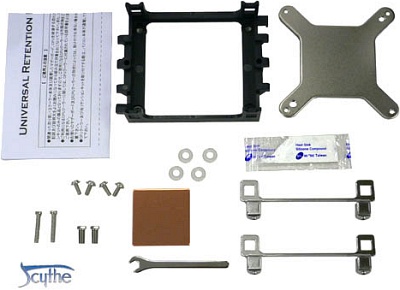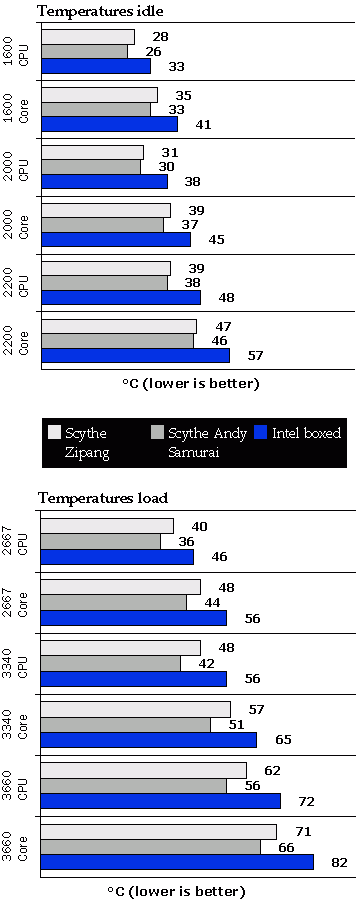Index
Page 5 of 6
Temperatures:
First, we tested an Intel board with an old Intel E6700 dual-core CPU. It seems the heatspreader is not very good, as the delta between core and heatspreader is quite high. We used our multimedia benches x264 and lamemt to check out the maximum temperatures. They will give a proper evaluation for any application you run. While overclocked the Intel platform does not decrease VCore when idle. We replaced the silicon thermal grease with Arctic Silver 5.
We have tested all Scythe Coolers with the additional available Universal Retention Kit. This might give you up to 1°C better temperatures with high overclocks or it will help you stick a decent cooler on your Skulltrail or Xeon boards.

The Scythe Andy is the clear leader; the temperatures at 3660MHz with the boxed Intel cooler are the maximum before the CPU crashed the board due to excessively high temperatures. With an E6x0x CPU the maximum temperatures on the heatspreder should not exceed 62"C. Earlier CPUs have a specified maximum temperature of 72°C.

The AMD platform is quite different. We overclocked the CPU to 2645MHz, more was not possible, because AMD's Overdrive software did not work as expected. At least the tool does have a nice stability test, which heats the CPU more than any application we could find. The temperatures are in general much lower with AMD, and real world applications will not reach it. The delta between cores and heatspreader is much smaller. The boxed cooler itself is much better compared to Intel, because it consists of four 6-mm heatpipes. However, the fan is going up to be quite unbearable at 2900RPM for sensitve ears.

